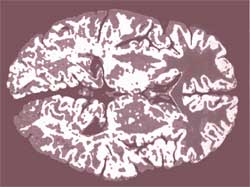Brain teasers
 PREVIOUS studies have shown that the human brain is efficient at using different portions of itself to perform different tasks. Interestingly, there is evidence from neuropsychology that localisation of brain's functions goes further. Thad Polk and Martha Farah of the University of Pennsylvania, us, have built a thesis around the assertion that the stimuli that are processed by different regions of the brain tend to occur in a composite fashion in space or time (Proceedings of the us National Academy of Sciences, Vol 92, 1995).
PREVIOUS studies have shown that the human brain is efficient at using different portions of itself to perform different tasks. Interestingly, there is evidence from neuropsychology that localisation of brain's functions goes further. Thad Polk and Martha Farah of the University of Pennsylvania, us, have built a thesis around the assertion that the stimuli that are processed by different regions of the brain tend to occur in a composite fashion in space or time (Proceedings of the us National Academy of Sciences, Vol 92, 1995).
It means that if your eyes light upon a letter, the chances are high that the following symbol will also be a letter, and the same for digits. It is only rarely that letters and digits tend to cohabit with one another in a scrambled manner. Similarly, a musical note or a vocal-isation in one language is heard in con-junction with another note or a second vocalisation in the same language.
The processing of visual stimuli provided by letters and digits, or by music versus other sounds, or by cursive writing versus print, seems to occupy different regions of the brain. Also, in people who are fluent in more than one language, different cortical regions seem to handle each language.
The localisation of brain's functions had earlier been ascribed to genetic tendencies working according to the distinctness of the functions themselves. The puzzling fact is that the categories that are being discriminated in such a fashion
